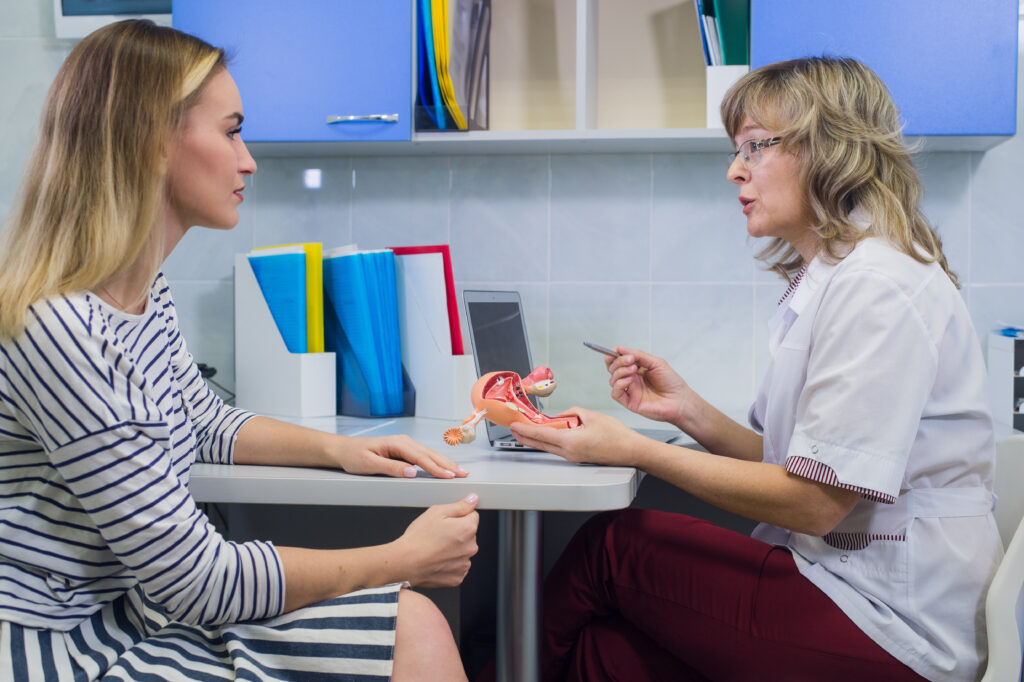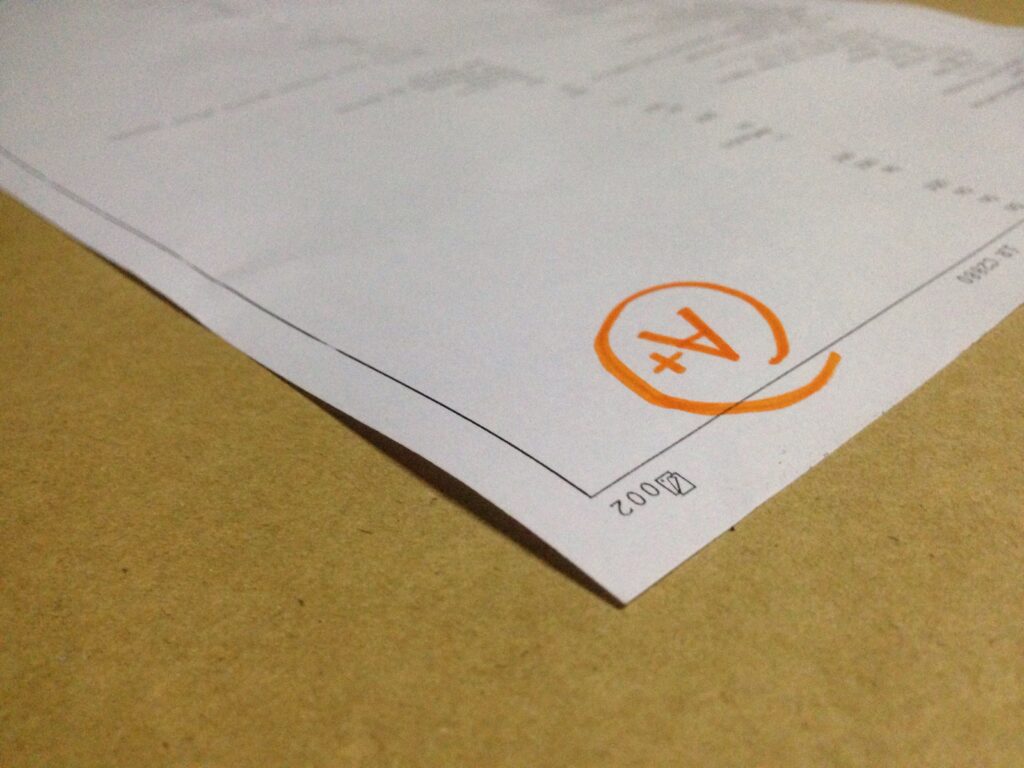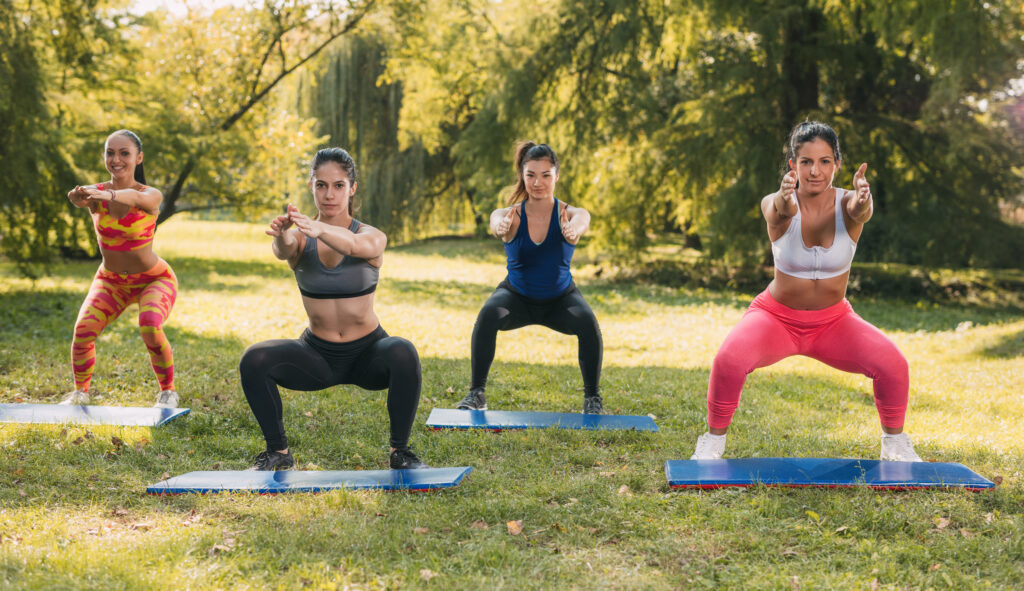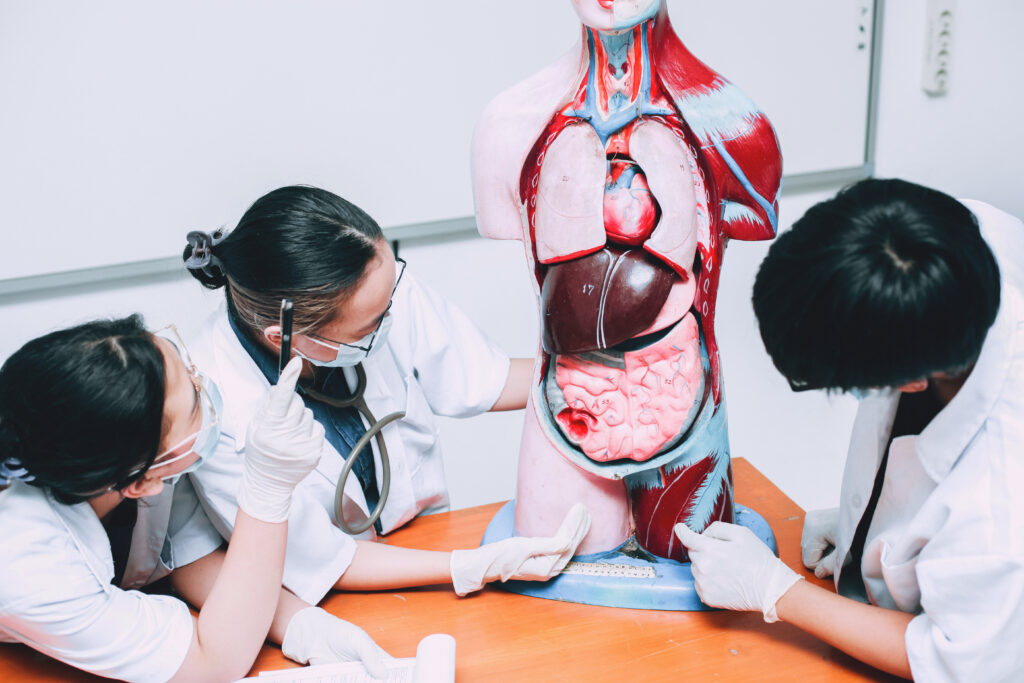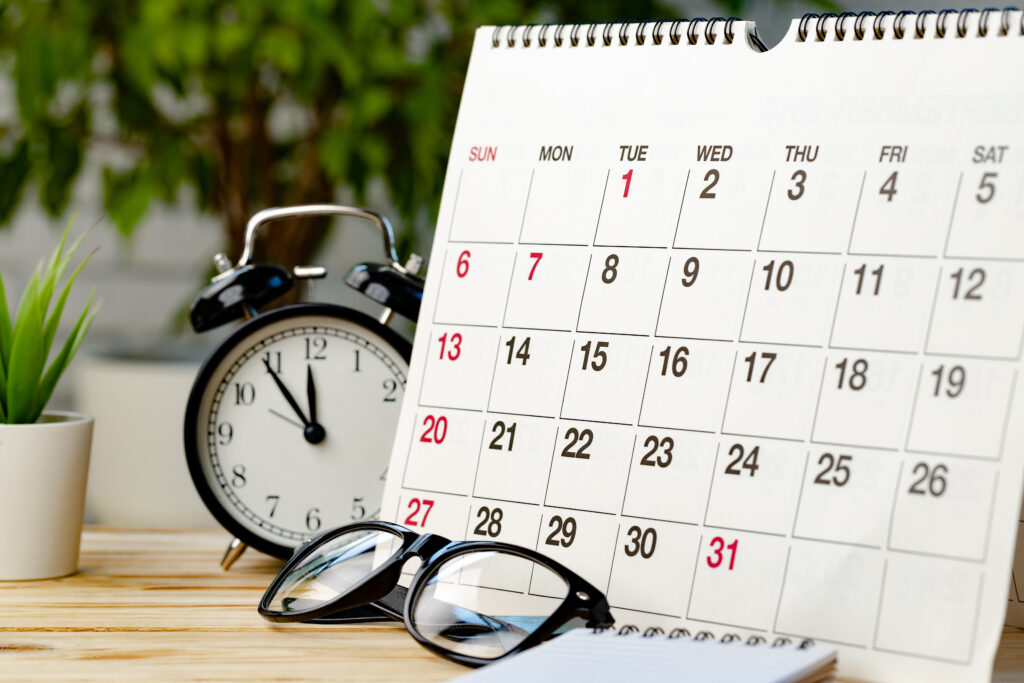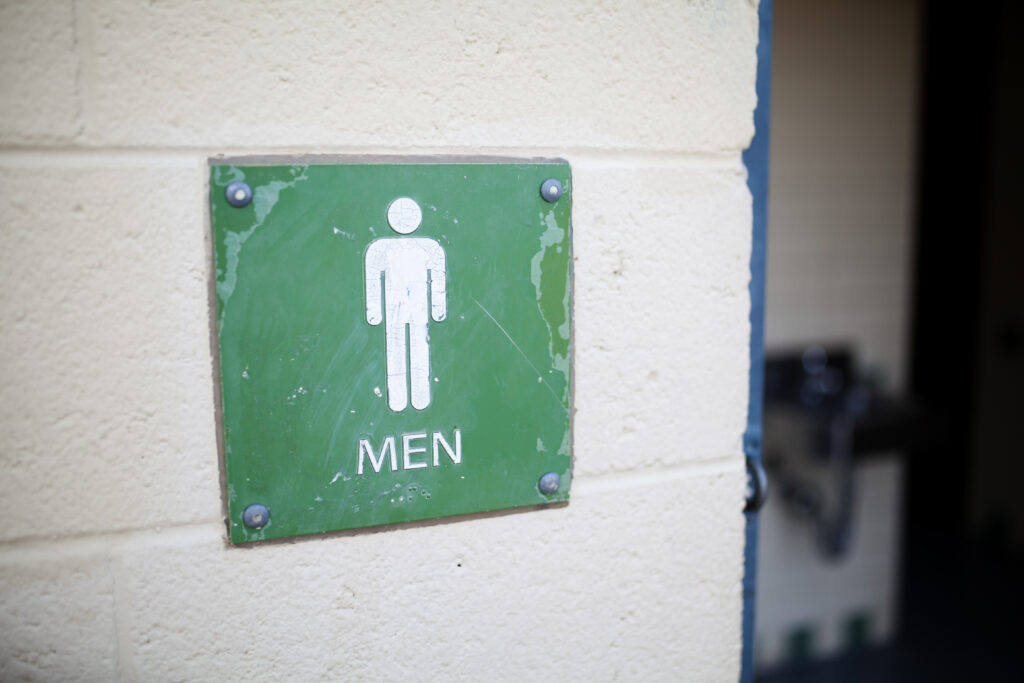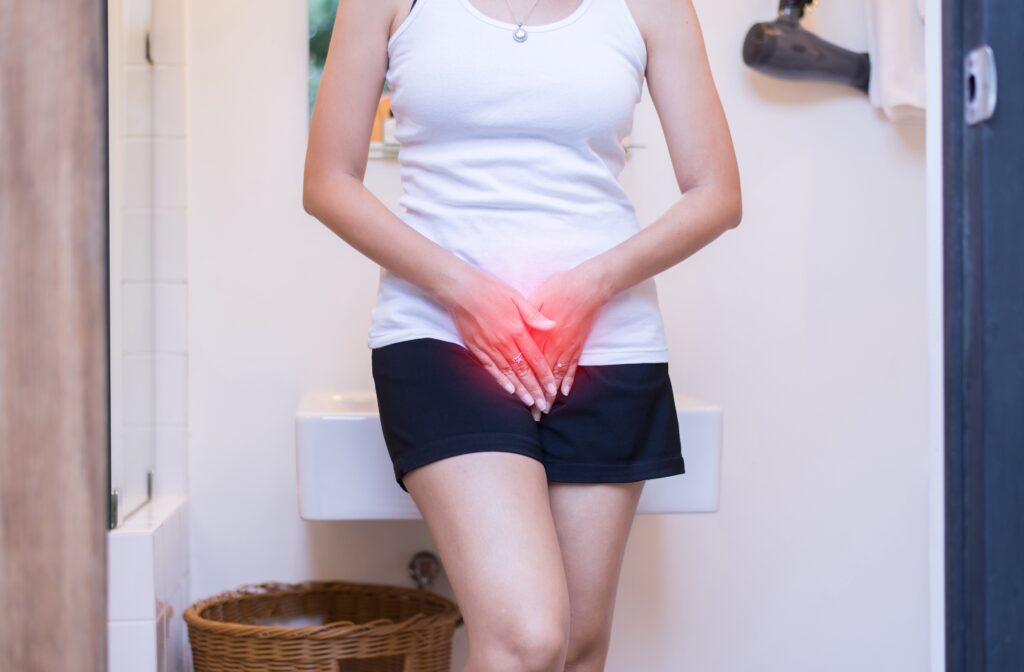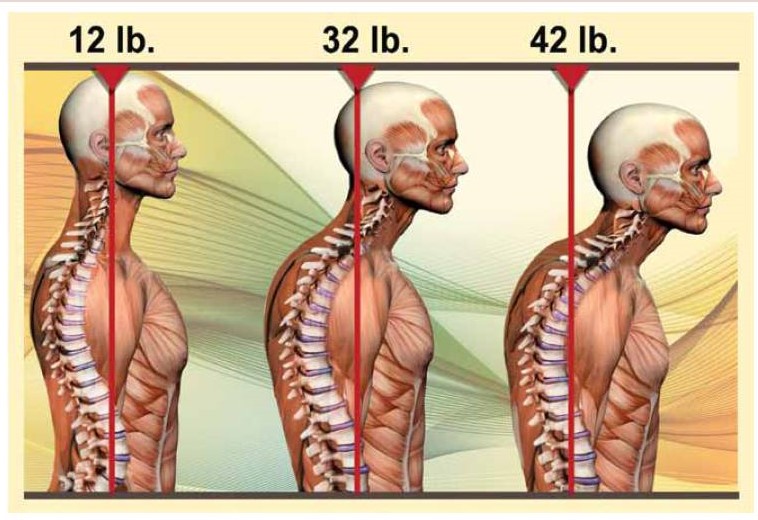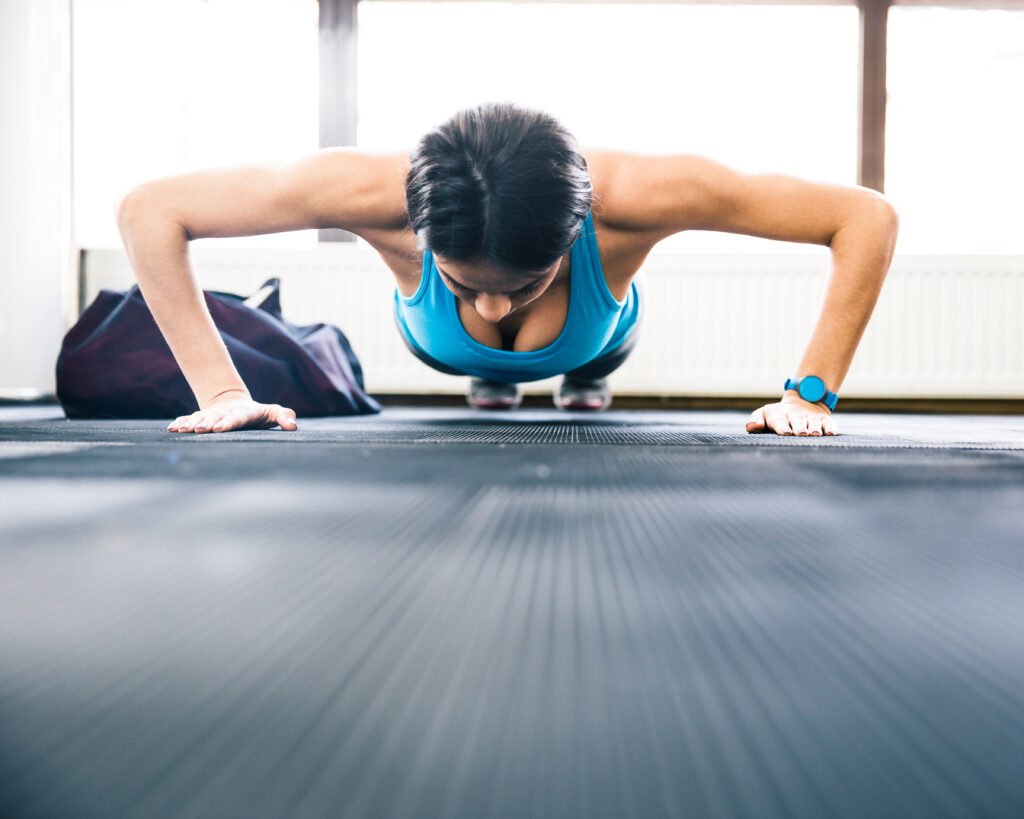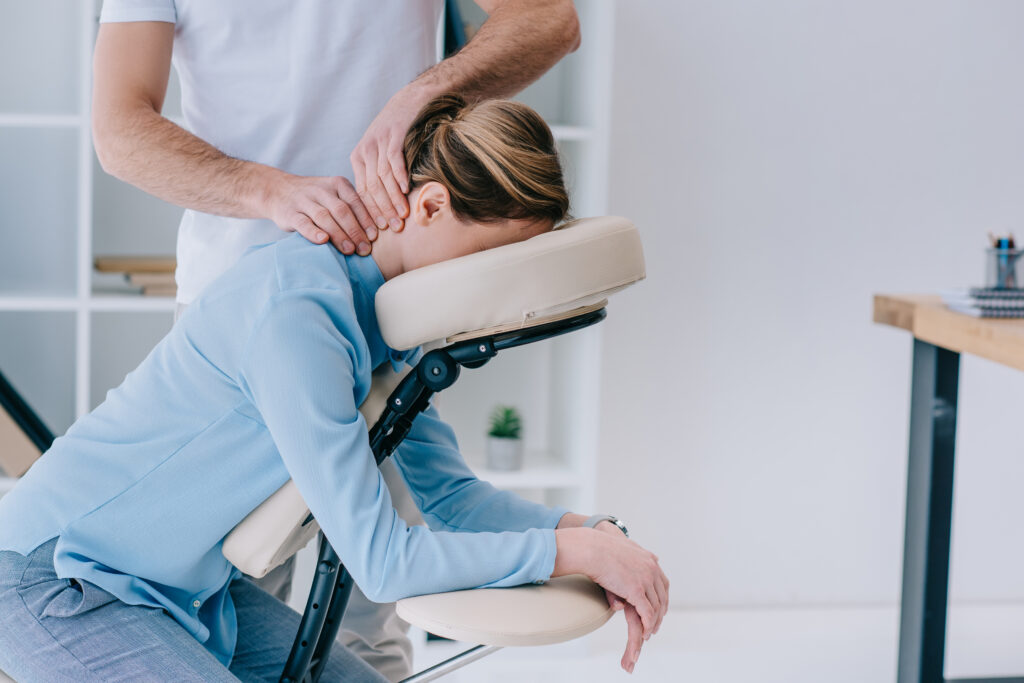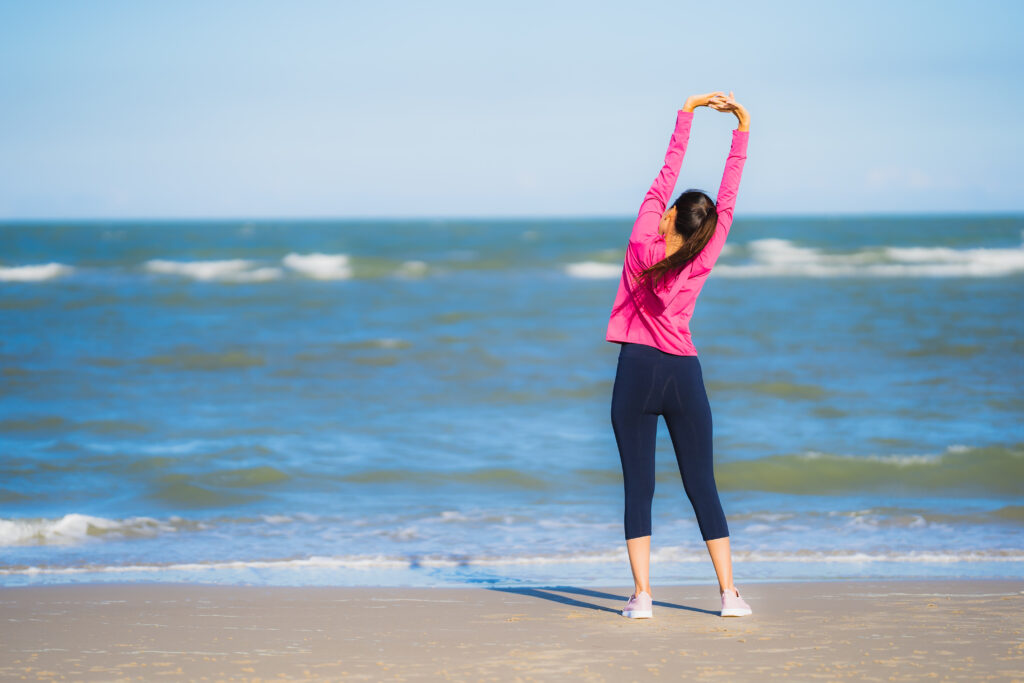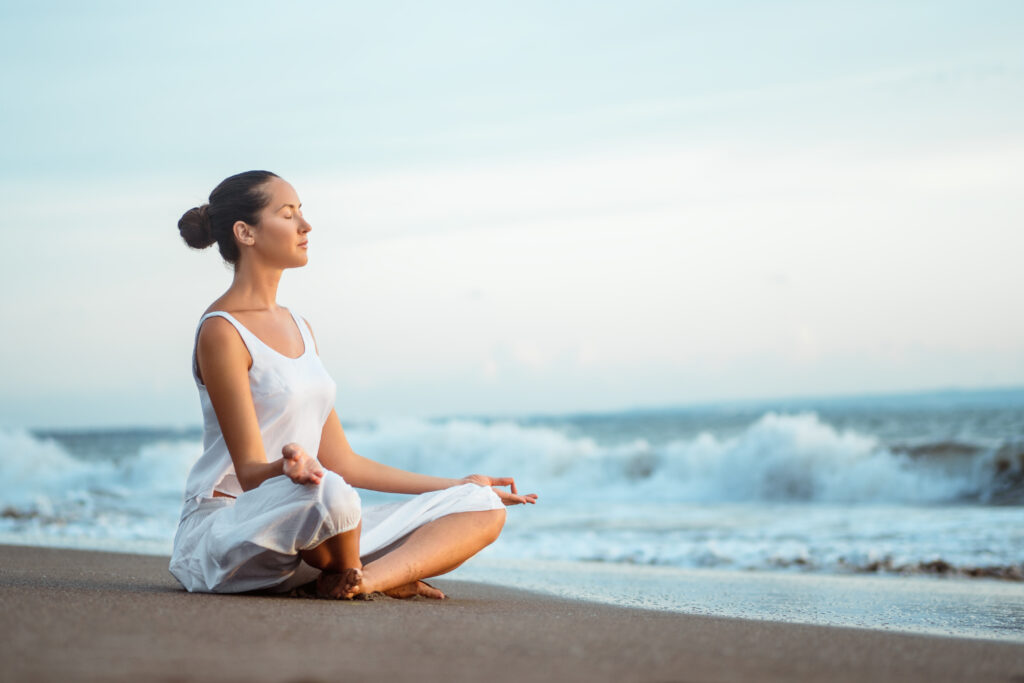December 1, 2023
Mt. Katahdin! One and done!
Mt. Katahdin! One and done!

Coach Cathy, the unintentional mountaineer of Hybrid Fitness, reflects on her daring encounter with Mt. Katahdin – the Maine hill that moonlights as a mountain. As winter rudely barges onto the coast, she finds herself reminiscing about the sweltering July day when hiking morphed into an unexpected extreme sport.
For those familiar with Cathy’s fitness philosophy, she’s not your average weekend hiker. No, she skips the small talk and jumps straight into conquering giants – Longs Peak, the Grand Canyon, the Inca Trail, and the Everest Base Camp Trail. Because she can’t let leisurely Sunday strolls be her beaten path; Cathy opts for marathons of elevation gain.
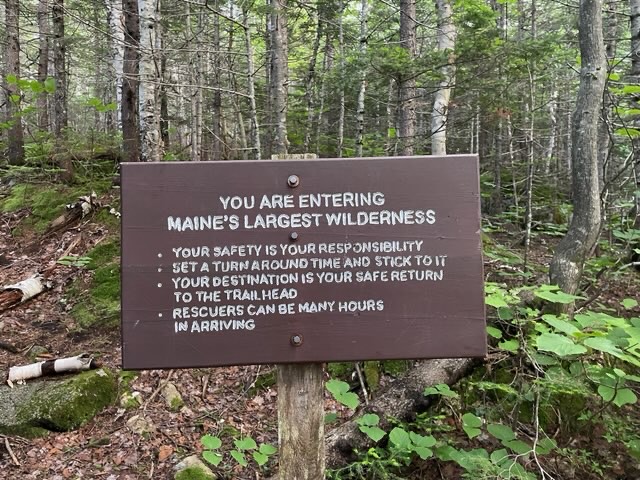
Now, why does she lump Mt. Katahdin into the same league as these Herculean trails? According to Cathy’s logic, one punishing day on Katahdin equals the sweat equity of traipsing through the likes of Longs Peak. Sure, Longs Peak might be a day trip, but the Inca Trail and Everest Base Camp? Well, those are essentially the “Netflix binge of hiking.”
With its myriad trails, Mt. Katahdin presents a choose-your-own-adventure scenario. It’s not for the faint-hearted or the unprepared. Cathy, ever the maverick, dives headfirst into the planning conundrum – from trail parking permits to toe-first, heel-first dance moves required between the rocks. The toenails will grow back, right?
Cathy’s accidental comedy of errors reaches its peak (pun intended) at the trailhead. A sign mocks her, proclaiming, “Set a turn around time and stick to it.” Cue Cathy’s realization that she missed the turn-around-memo, spinning her hike into an unanticipated test of endurance. Next time, she’ll pay more attention to signs and less to her wanderlust. Maybe.
Accompanied by her 15-year-old son, the unsung hero of the escapade, Cathy delivers the casual line, “We just need to get back to the car,” as if summiting a peak is akin to a stroll to the neighborhood store for bread, milk & eggs. Meanwhile, in distant lands like Peru and Nepal, multi-day hikes await – a stark contrast to the one-hit wonder that is Mt. Katahdin.
Joined by fellow fitness enthusiast Amy Mitchell and her son, weekend hikers with a penchant for waiting, they inadvertently become Cathy’s motivational squad, proving that if Cathy hiked on weekends, they wouldn’t need patience and fly swatters.

As Cathy navigates through breathtaking views, dazzling waterfalls, and greenery that puts emeralds to shame, she can’t help but draw parallels to Frodo and Sam’s perilous journey to Mordor. A Great Eagle swooping in to rescue her from the relentless trails and the horror of summit black flies (which conveniently do not show in the photos) becomes a wistful daydream.

Reflecting on her saga, Cathy contemplates the elusive balance between preparation and spontaneity. While Mt. Katahdin might be a “been there, done that, not doing it again” scenario, the siren call of Mount Kilimanjaro in Tanzania adds another chapter to her unintentional mountaineering exploits. With a nonchalant “Hold on. Let me grab my backpack,” Coach Cathy sets her sights on another globetrotting conquest, ready or not!
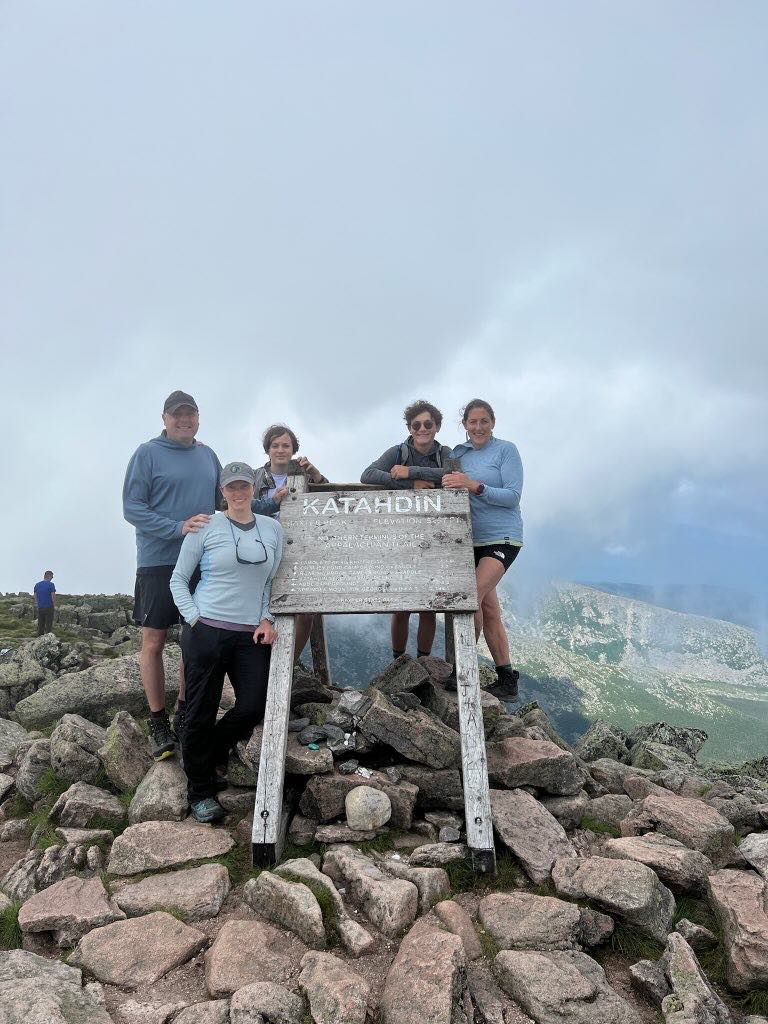
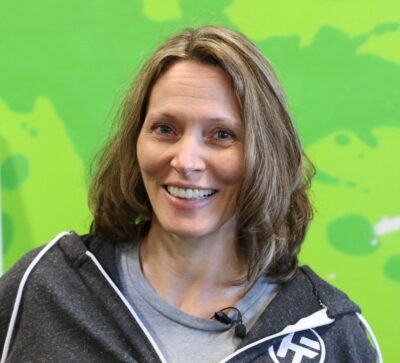
Cathy grew up in NH surrounded by a large, loving family, where she learned generosity and hard work. She now models that for her two children. She was inspired to become a fitness coach when searching for ways to become more healthy herself after a life-threatening illness.
July 11, 2023
Taking Work on Vacation: Dreaming of Hybrid Members in Spain

Coach Cathy recently went to Spain with her daughter for two weeks of Spanish language lessons, taking Hybrid members along for the ride.
Our Hybrid members were not actually there, but several nights while I was away, I dreamed that Hybrid members were in Spain traveling with my daughter and me. This scenario gives a new meaning to taking your work home. I also dreamed that family members and friends outside of Hybrid were traveling with me, too.

In Barcelona, I dreamed that my daughter and I were walking on the sidewalk with two Hybrid members who are sisters. One of the sisters exclaimed that it was exciting to be in Barcelona, and she couldn’t wait to try the churros dipped in chocolate. The other sister said big cities aren’t really her thing because they are crowded, loud, and busy. Then she abruptly stopped walking when she saw a store window sandwiched between Chanel and Gucci with a gorgeous Lilly Pulitzer dress on a mannequin. Lilly Pulitzer is one of her favorite clothing brands. Her sister started laughing, and we all went into the store. We resurfaced 40 minutes later with beautiful and pricey wardrobe pieces. I woke up disappointed that it was a dream, that the sisters weren’t there in Barcelona with us, and that I didn’t own the ankle-length green eyelet maxi dress I had purchased. However, my wallet and suitcase were extremely grateful that I hadn’t purchased anything.

In the southern coastal city of Marbella, I dreamed that a group of Hybrid members joined my daughter and me for some speed walking on the promenade (Paseo Maritimo) before breakfast. The weather was beautiful, the sun just up and shining. After our sweaty walk, we removed our shoes and waded in the chilly and refreshing Mediterranean. A few did more than wade and walked the block back to our flat with wet clothes laughing all the way.
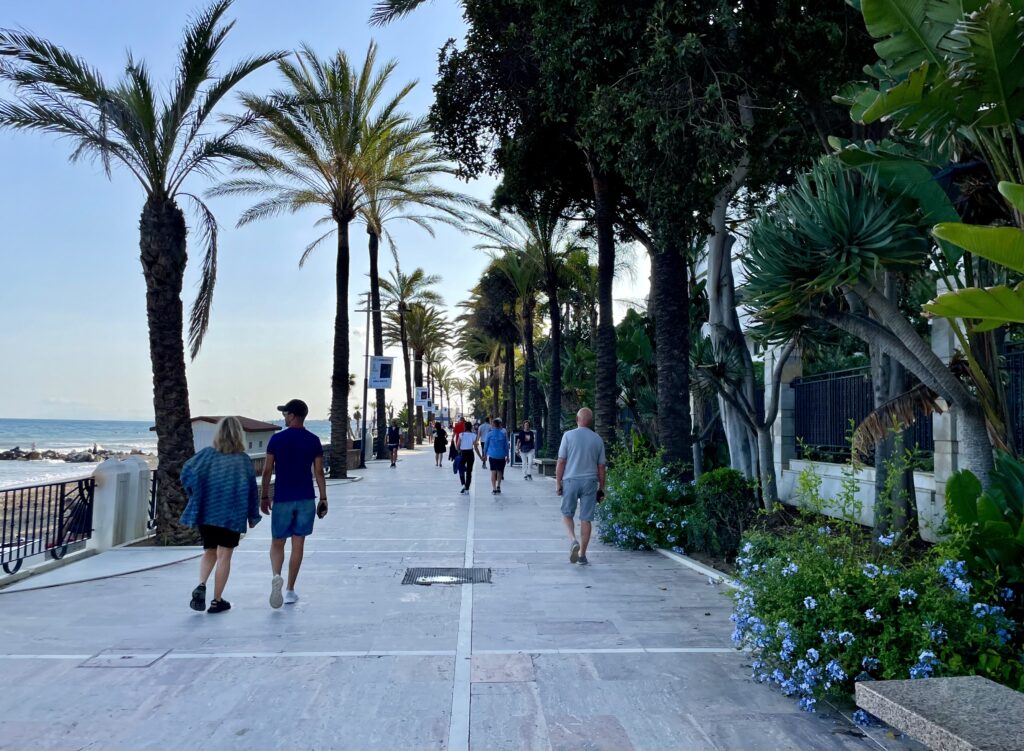
Another dream I had in Marbella was when one of our Hybrid members and I snuck off while my daughter and a few other Hybrid members were shopping for sundresses and jewelry. We found the best gelato with flavors like salted caramel, strawberry cheesecake, Tiramisú, and my favorites, white chocolate pistachio and stracciatella (fancy chocolate chip). Everyone was envious when they emerged from the shops seeing us sitting on a bench with a view of the Mediterranean savoring two-scoop gelato cones.

I dreamed that when my daughter, Hybrid members, and I arrived in Granada and exited the van, one of the gals said they weren’t interested in seeing the tourist sights. Instead, they pointed to the mountains and said, “I want to hike that! Who’s with me?” A few members agreed, and the next day they hopped in a van arranged by the hotel that took them to a trailhead for a day-long hike while the rest of us toured the Saint Jerome Monastery, the Basilica, and the Royal Chapel.

Also, while in Granada, I dreamed of sharing a hotel room with three great gals from the 9:15 MWF Ultimate Results sessions. I conversed with one of them about how she gets her hair to look that healthy and what kind of conditioner she uses. One of the other members interrupted our chat, saying, “Hurry up, you two. I want to see the palace and the gardens”. Then the fourth gal, memorizing the city map, piped up with, “That’s right. Let’s get a move on, girls!”.

As we traversed the coast of Spain, many more moments reminded me of Hybrid members, their personalities, challenges, optimism, and dedication. I shared the fitness journeys I have witnessed while working at Hybrid Fitness with my daughter throughout the trip. My daughter is not athletically inclined, and I would like to plant that seed for her to tend to help her physically and emotionally. I could see her acknowledging and absorbing the lessons the members taught me session after session.

When our members say that their coach at Hybrid has helped to inspire them to be all they can be, I don’t think they realize how much their presence at the gym has the same effect on the coaches. I am repeatedly in awe of the accomplishments of our members, whether it be hitting a weight loss goal or a personal lifting record or using the confidence they’ve gained at the gym to do something new in their daily life. I am grateful I get to work with our members, and I appreciate how we inspire each other to be our best selves inside and out.


Cathy grew up in NH surrounded by a large, loving family, where she learned generosity and hard work. She now models that for her two children. She was inspired to become a fitness coach when searching for ways to become more healthy herself after a life-threatening illness.
July 7, 2023
Hybrid’s Muddy Princesses 2023!
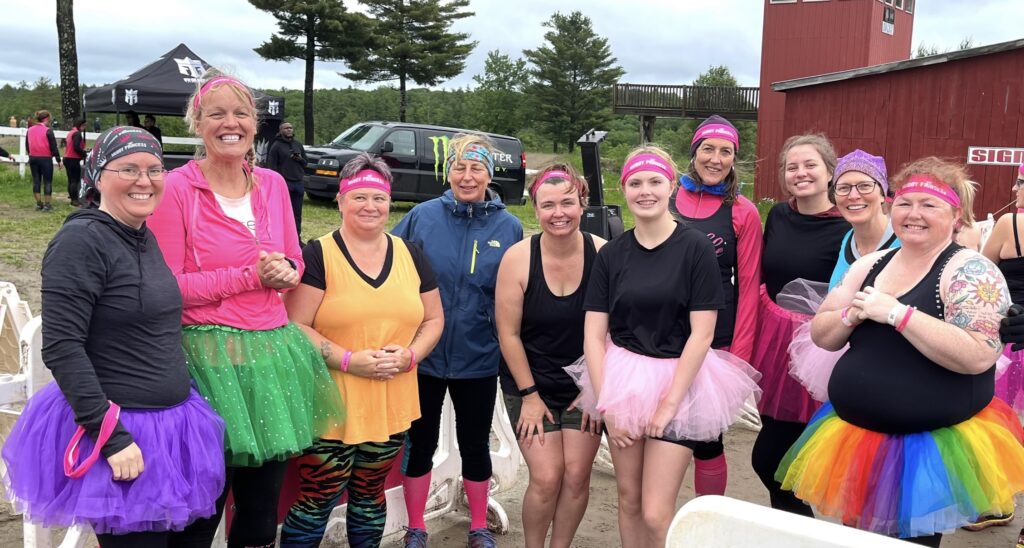
Coach Cathy is here to say that Hybrid Fitness has some hearty souls who participated in the Muddy Princess in Minot, Maine on Father’s Day.
Here’s a shout-out to Hybrid members Tabitha Fillion, Amy Mitchell, Shannon Burns, and Coach Cathy!

Tabitha got the ball rolling by creating a team, Rack Attack. She signed on three of her besties and anyone looking to get muddy. Shannon and I each brought our daughters, and another friend of Amy’s and Cathy’s, also named Amy, jumped on board for some slippery fun in the mud.
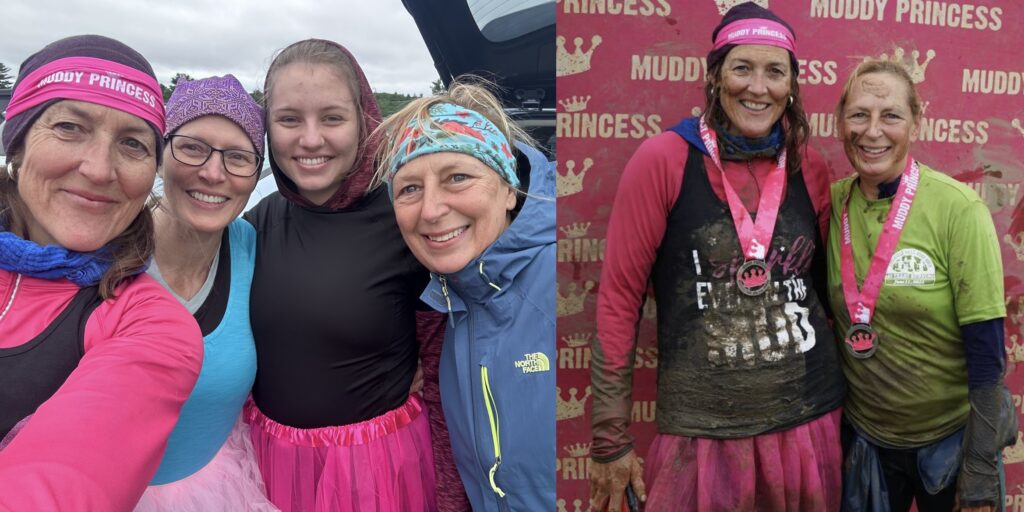
What’s the Muddy Princess, you ask? The organization partners with the National Breast Cancer Foundation (NBCF) for mud courses nationwide. The NBCF aims to fill the gaps in cancer care by ensuring every woman has access to the information she needs. Some of you may not know that I went through breast cancer in 2018. I know this hits home for many people who have experienced it themselves or through the journey of a loved one.
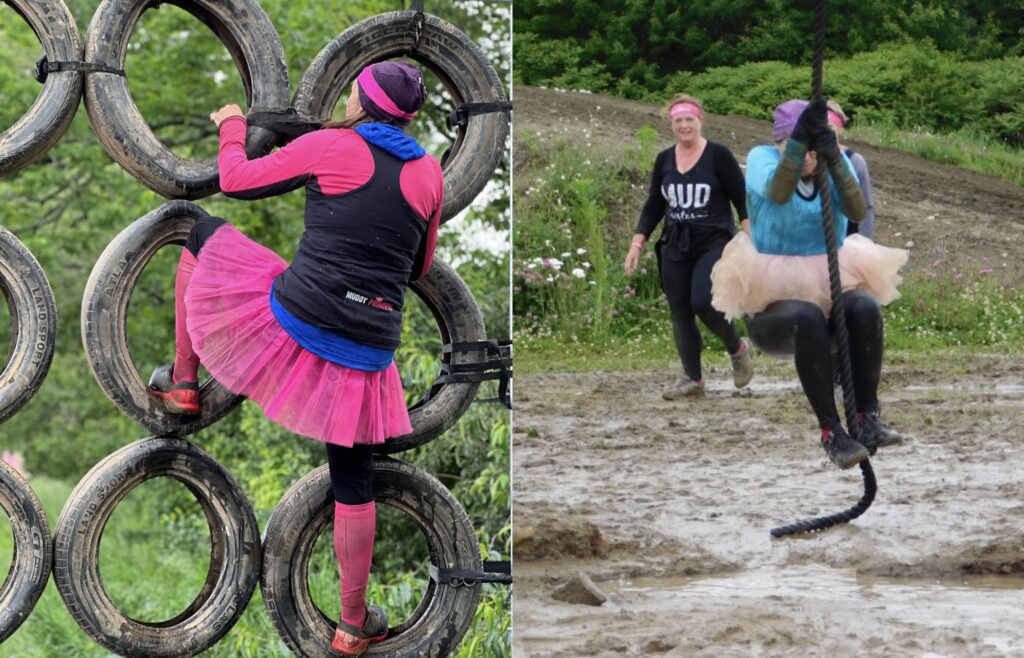
Women of all sizes, ages, and fitness levels from 7 years old and up can enter the Muddy Princess. Participants can run, jog, skip, walk, and sometimes crawl the course. It is not a race, but 100% fun and teamwork.
Participants can skip any obstacle because it’s a completely judgment-free zone. What could be better than that?

Scattered along the course are 18+ obstacles. Some highlights are traversing muddy pools, climbing walls of tires, swinging over mud pits on ropes, sliding slides into muddy water, crawling under or over barriers, and getting soaked in pink bubbles. On average, participants take two hours to cross the finish line. It’s uninhibited child mud pie-making with your favorite gals.
We had a great time and cannot wait to be muddy again next year. Who’s in? 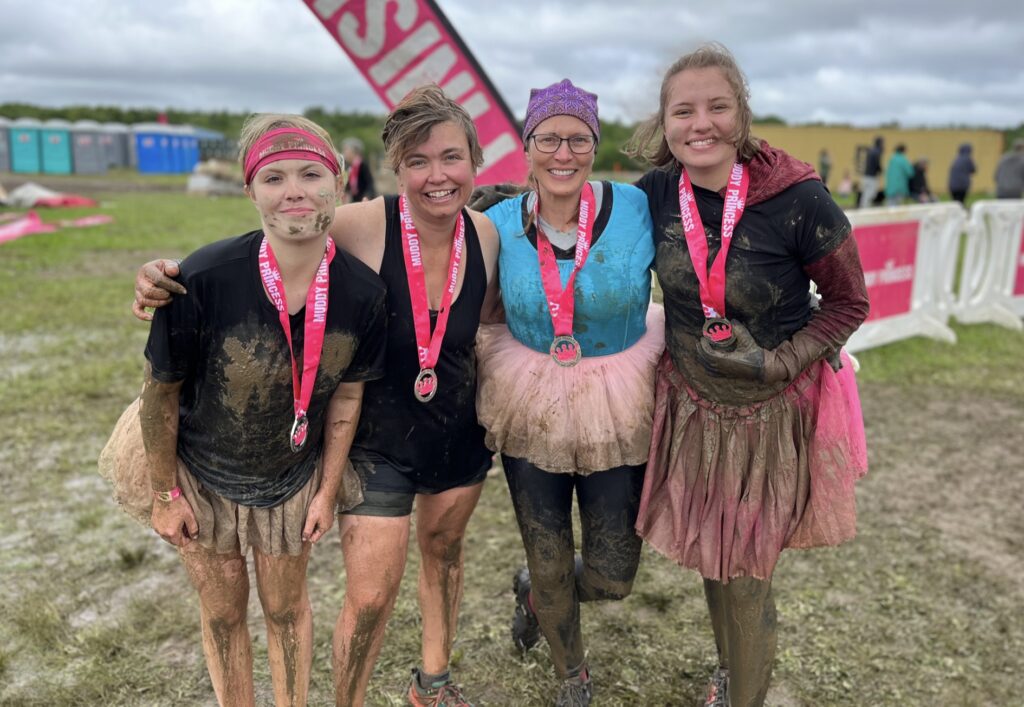
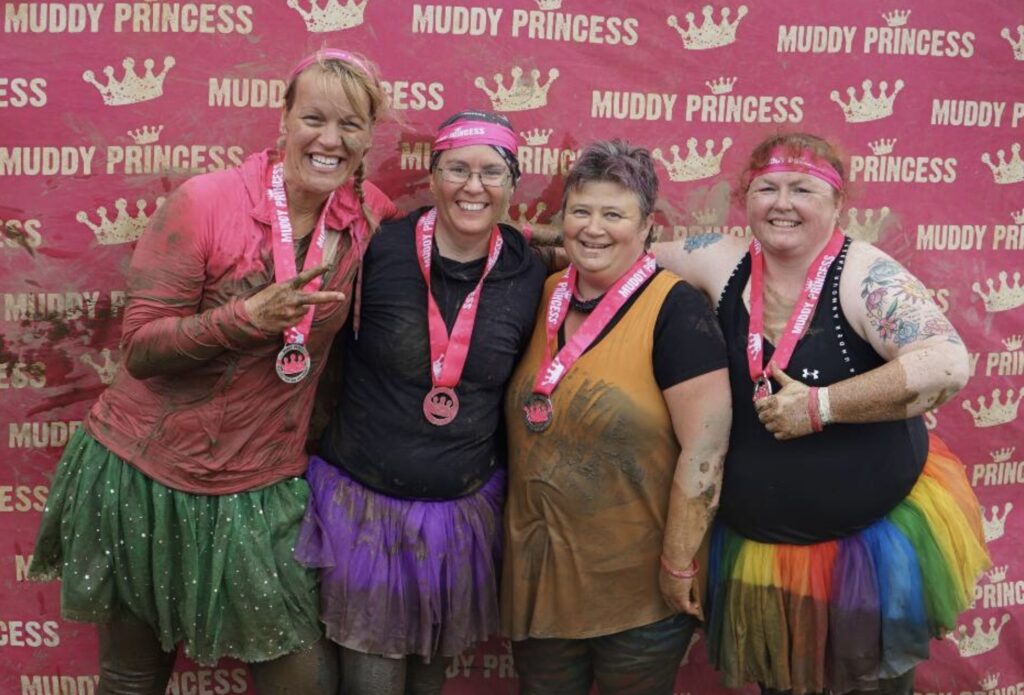

Cathy grew up in NH surrounded by a large, loving family, where she learned generosity and hard work. She now models that for her two children. She was inspired to become a fitness coach when searching for ways to become more healthy herself after a life-threatening illness.
May 16, 2023
New Yorkers on the Move!
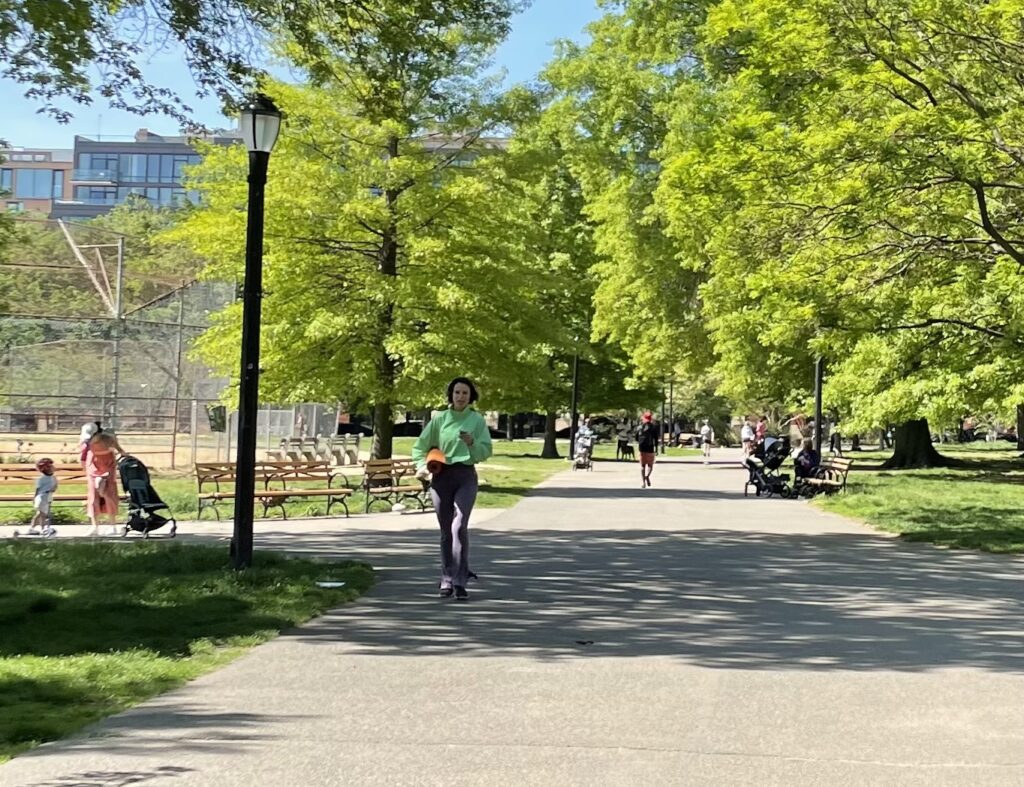
Coach Cathy recently spent a long weekend in New York City and observed New Yorkers in action.
Walking around the city (Manhattan and Brooklyn), I noticed how many people were huffing it. Whether walking to or from work or the gym, running errands, or walking/running as a form of physical exercise, they were all trucking at an impressive clip—no slow pokes.
I picked up my pace and wondered if city folks exercised more daily than folks in Midcoast Maine. The answer is yes, probably because it’s their way of life. They must walk at least part of the way to their job, school, gym, grocery store, or a night out. We have many places to walk and hike on the coast, but it’s more for recreation and not a necessity.
Over the years, there has been much speculation about how many steps the average American takes daily and how many steps per mile. According to Mayo Clinic research, the average American walks 3,000 to 4,000 steps daily, roughly 1.5 to 2 miles. Other sources, such as verywellfit.com, say the average is 5,000-7,000 steps daily. Either way, it’s still less than the golden rule of 10,000 steps.
Did you know the 10,000 steps recommendation is not grounded in scientific research? Although impressive, 10,000 is a nice round number used in advertising for tracking devices. There are many things to consider when choosing your daily step goal, such as age, height, length of stride, occupation, and fitness goals. The number of daily steps is not one size fits all. Gradually increasing your step goal is more sustainable than jumping from 2,000 to 10,000 overnight.

While I enjoy visiting NYC, I craved greenery versus pavement as I traversed the boroughs. NYC prides itself on the number of parks open to the public. The parks provide safe spaces for small children and pets to burn energy and quiet spots for relaxing away from the hustle and bustle of the city. They are also quite beautiful, with flowers, trees, and boardwalks along the water.
I meandered through one of the parks, searching for a place to sit to eat my chocolate glazed donut from Peter Pan Bakery. Yes, the Brooklyn bakery in Spider-Man where MJ works! Maybe I stood in the exact spot where Zendaya and Tom Holland stood while making the movie. From my comfy bench, I noticed that aside from flying feet, New Yorkers were moving in many ways. I saw yoga classes on the grass, calisthenics on the sidelines, runners everywhere, and an awe-inspiring bike tour.
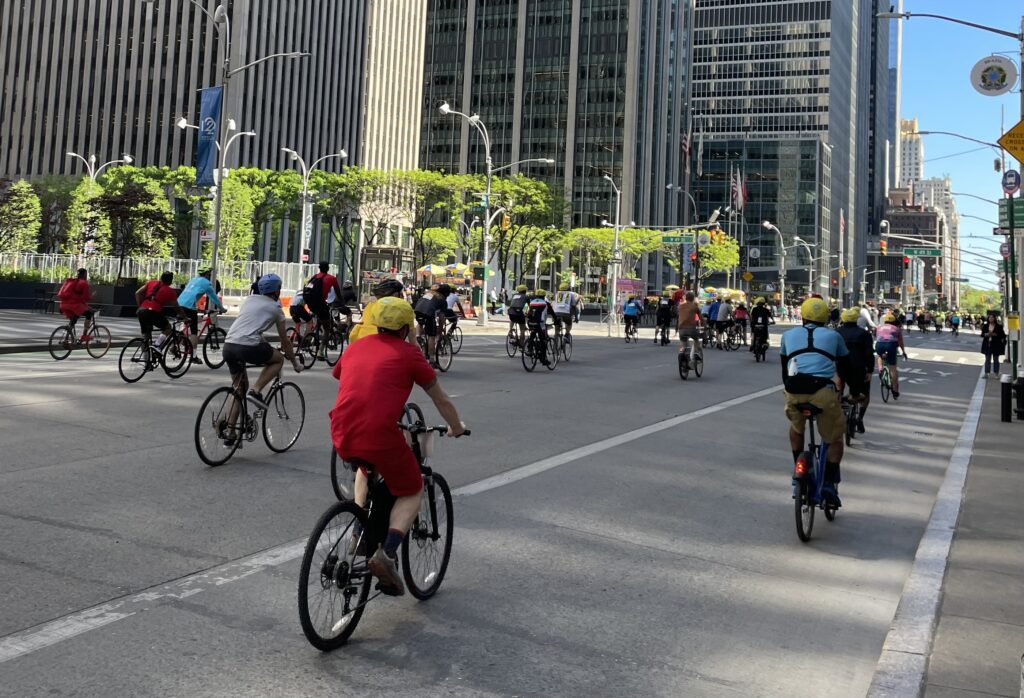
It was the 45th Anniversary of the TD Five Boro Bike Tour by Bike New York. It’s a 40-mile bike ride through Brooklyn, Queens, Manhattan, The Bronx, and Staten Island. The streets are closed to cars; participants can use their bikes if they own or rent city bikes. It is quite the event uniting 32,000 people to fund building miles and miles of bike-friendly lanes and fundraising for many individual charities.
The takeaway is that New Yorkers certainly know how to get moving and keep moving every day. For the record, I had no guilt about eating my chocolate glazed donut while watching the fury of exercise surrounding me because I had 11,000 steps, including 32 flights of stairs, and it was only 10:00 am—still lots of time for yoga in the park. Even though I am back in Maine, moving like a New Yorker will help me close the rings on my fitness tracker. Time to increase my step goal!
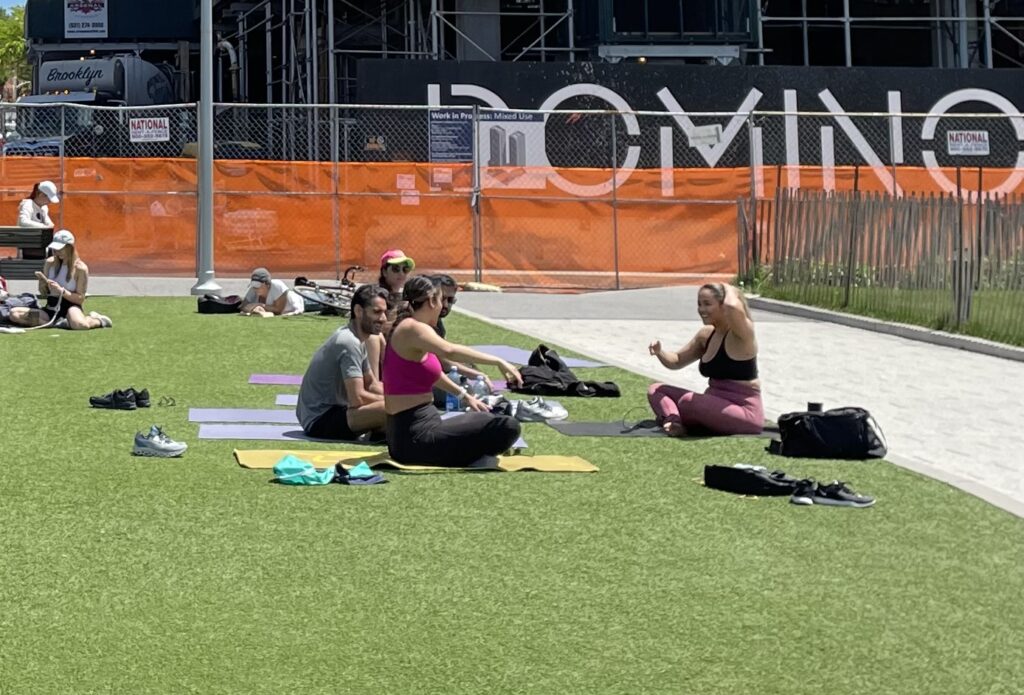

Cathy grew up in NH surrounded by a large, loving family, where she learned generosity and hard work. She now models that for her two children. She was inspired to become a fitness coach when searching for ways to become more healthy herself after a life-threatening illness.
April 12, 2023
let your body and mind relax
Pampering helps to beat a plateau! (Psst, highlighting a few of our members below. Keep reading)
Yup, I’m not necessarily referring to eating an entire box of chocolates in one sitting. However, that does sound inviting, mainly when I see a flat line representing my progress toward my fitness goal. Coach Hunter would say that maintaining is still progress, but it bites me a little when progress takes a hiatus.
The pampering I am referring to here is physically letting your body and mind relax by putting yourself in a well-deserved time out from the daily bustle.
What does pampering mean to you?
Lying on a warm beach? Soaking in a bath? Lounging on the couch with a good book?
What about time at the spa?
The spa is less expensive than traveling to a warm beach in the winter. The trip is worth its weight in gold, but what if you can’t make that tranquil trip happen? We can take a bath at home to feel a sense of relaxation most of the time. We can even try to read that good book in the tub, but when I’m in the bath at home, my to-do list doesn’t stop running through my head. I can also hear other people in the house. I know that at some point, they will need me for something. I have found that I am worth the price of any spa treatment for the jump start it gives me and then some.
In the past, I viewed a spa treatment as a reward for reaching a goal. I now know that relaxing and rejuvenating my whole being helps me reach that goal. It gives me an extra boost to put some wiggle in the flat line of a plateau.
Time at a spa is heavenly because it makes your body and mind feel better. Think of it as an extension of your medical and fitness plans to keep your body in its best possible condition.
Any spa treatment (massage, manicure/pedicure, facials, body scrubs, float therapy, etc.) benefits your well-being.
- It helps relieve pain, whether chronic, injury, or delayed muscle onset soreness (DOMS) from pushing yourself in the gym.
- It increases blood circulation bringing nutrients and oxygen to all the cells of the body
- It brings a moment of complete disconnect from busy lives
- Depending on the treatment, exfoliating the skin can be a benefit for shedding the old and promoting regeneration of new skin cells to make your skin glow
- Stimulates the lymphatic system to eliminate toxins, increase energy and release serotonin to help with sleeping, healing, and digestion
- Enables physical and mental relaxation to boost mood and relieve tension
Sounds lovely, right?
Ready to schedule a pampering appointment?
We happen to have a few Hybrid members that I am aware of that offer massage and nail care. Please let me know if there are other members.
Samantha Parker is a massage therapist and nail technician at Mia Bella Salon, 99 Park Street in Rockland, (207) 230-0228.
Trish Young is a massage therapist at Green with Envy Salon at 453 Main Street in Rockland, (207) 593-8510.
Amy Mitchell owns Rockland Massage Therapy at 16 School Street in Rockland, (207) 691-7490.
If you feel in a slump or hope to shake up a plateau to reach your fitness goals, please consider calling them. After all, YOU are worth having it be a part of your wellness plan for life because YOU are a rockstar!

Cathy grew up in NH surrounded by a large, loving family, where she learned generosity and hard work. She now models that for her two children. She was inspired to become a fitness coach when searching for ways to become more healthy herself after a life-threatening illness.
January 24, 2023
Coach Cathy’s trek in Nepal!
Many of you know that I tackled the Khumbu Valley Trail in Nepal in December. What you may not know is that I am NOT a hiker. That said, I tend to trek only big stuff. Wait, what? I know that does not make sense. It started years ago when I lived in Colorado. With some friends, I conquered Longs Peak, a fourteener in the Rocky Mountains, without much preparation. I triumphed all the same.
I renewed my lack of hiking preparation in the fall of 2021 when I set out for a two-week adventure of a lifetime. I was officially in my fifties and felt there was no time like the present to push my boundaries and step outside of my comfort zone. You know, physical exertion, mental mind-bending, temperature changes, in-your-face nature, potentially dangerous and suspicious food, and anything that makes you wonder later why you agreed to be that uncomfortable in every way.
I was hesitant, to say the least because I was about to hike 26 miles to get to Machu Picchu in Peru. When I say I do not hike, I do not step outside my door on weekends with my hiking boots laced up to huff and puff to the top of anything. I live at sea level in a beautiful place with many easily accessible hiking spots, but I don’t hike. No excuses. I sort of like hiking. I mean, I like the idea of hiking. I do not go out of my way to make it happen or prepare in any way for it.
 What do you do when you are about to push your limits? You lean on a friend, right? Surround yourself with support and inspiration, which is one of the things I love about Hybrid Fitness. For this experience, one of my grade school besties, Tammy, was joining me. Tam is the epitome of a spirited go-getter. Just what I needed! After 45 years, Tam knows me inside and out and has my back. However, she hikes. Like real hiking. Like all-the-mountains-in-New-England-every-weekend hiking. Compared to my apprehension, she was beyond ecstatic about this adventure.
What do you do when you are about to push your limits? You lean on a friend, right? Surround yourself with support and inspiration, which is one of the things I love about Hybrid Fitness. For this experience, one of my grade school besties, Tammy, was joining me. Tam is the epitome of a spirited go-getter. Just what I needed! After 45 years, Tam knows me inside and out and has my back. However, she hikes. Like real hiking. Like all-the-mountains-in-New-England-every-weekend hiking. Compared to my apprehension, she was beyond ecstatic about this adventure.
I love to travel and have been all over the world. As I get older, I am less willing to suffer for the experience. I envisioned myself trudging along, far behind Tam. That is if I wasn’t sitting on rocks or the wet ground, gasping for breath and sobbing periodically. I pictured arriving at our camp as a sweaty, hungry, dehydrated mess. And in the morning, being so sore, I’d have to stay on the mountain forever to live in harmony with the local alpacas.
 I am a Hybrid Fitness Coach. Coach is the keyword. I help others get the exercise they need, but there are more times than I care to admit when I don’t get the workouts I need. I haven’t been as consistent with my exercise schedule as I want. My nutrition is inadequate because I tend to have too many irons in the fire, and I skip meals. In my mind, this behavioral trend is a recipe for disaster. Not knowing what I had signed up for with this moderate-level Sacred Valley Peruvian quest, I questioned whether I was fit enough to check this off the bucket list. Summiting the top of Longs Peak was almost 25 years ago when my aches and pains were less, and my muscles were a hell of a lot more primed.
I am a Hybrid Fitness Coach. Coach is the keyword. I help others get the exercise they need, but there are more times than I care to admit when I don’t get the workouts I need. I haven’t been as consistent with my exercise schedule as I want. My nutrition is inadequate because I tend to have too many irons in the fire, and I skip meals. In my mind, this behavioral trend is a recipe for disaster. Not knowing what I had signed up for with this moderate-level Sacred Valley Peruvian quest, I questioned whether I was fit enough to check this off the bucket list. Summiting the top of Longs Peak was almost 25 years ago when my aches and pains were less, and my muscles were a hell of a lot more primed.
I had not been backcountry tent camping since b.k. (before kids). I was worried about my back after lying on the ground all night. I imagined tripping on the rock-strewn jaunt to the makeshift potty in the middle of the night in the blackest darkness. The temperature was a concern because I could only carry so much in my pack. Freezing after sweating from the exertion in the cold weather had me thinking there could be a possibility of never being warm again. I had no idea what the food and drink would be like, including coca leaf tea, sacred to the Incas, which has enough caffeine to shame Coach Brandon and Coach Ben. I purposely did not ponder the chances for any up close and personal conversations with unexpected critters as we intruded into their habitat.
 Despite all of these thoughts running through my head, I survived. I did gasp for breath but took more photos than anyone else because I stopped to take in my surroundings. I was slow but steady and arrived at camp whole and happy each evening, except when the toe of my shoe caught the step and sent me tumbling down stone steps. I don’t think I’ve seen that color purple in bruises before. Smiling and laughing took the place of sobbing, and my gear kept me dry in the downpours and shaded my fair skin from the sun. I applaud the thin sleeping pad that did save my back from complete agony. My muscles were sore but in a why-don’t-I-hike-more kind of way. The food was pleasingly on the edge of gourmet. The now welcomed coca leaf tea kept me warm since I didn’t bring enough layers. On a trip to the privy one evening, I made a deal with a tarantula that we would stay on our respective sides of the stall. Coach Brandon would have loved that. Overall, everything went well, but that didn’t mean it was easy. It was hard and NOT a vacation. It was what the brochure stated, an adventure trek. However, after much toil, Machu Picchu is a wonder to behold with its terraces and carefully constructed stone structures dating from the 1400s. Completely magnificent.
Despite all of these thoughts running through my head, I survived. I did gasp for breath but took more photos than anyone else because I stopped to take in my surroundings. I was slow but steady and arrived at camp whole and happy each evening, except when the toe of my shoe caught the step and sent me tumbling down stone steps. I don’t think I’ve seen that color purple in bruises before. Smiling and laughing took the place of sobbing, and my gear kept me dry in the downpours and shaded my fair skin from the sun. I applaud the thin sleeping pad that did save my back from complete agony. My muscles were sore but in a why-don’t-I-hike-more kind of way. The food was pleasingly on the edge of gourmet. The now welcomed coca leaf tea kept me warm since I didn’t bring enough layers. On a trip to the privy one evening, I made a deal with a tarantula that we would stay on our respective sides of the stall. Coach Brandon would have loved that. Overall, everything went well, but that didn’t mean it was easy. It was hard and NOT a vacation. It was what the brochure stated, an adventure trek. However, after much toil, Machu Picchu is a wonder to behold with its terraces and carefully constructed stone structures dating from the 1400s. Completely magnificent.
 After Peru, I thought I would be able to cross hike-something-big off my bucket list, but then my guide friend from college, Chris, offered to take me on a trek in Nepal this past December. He and his wife operate an adventure tour company (Far Xplorer) and spend much of the year in Nepal. Our trek would be the Khumbu Valley Trail towards Everest’s base camp. Not Everest itself. I am not altogether crazy. He said our walk would be mellow, with time to pause for tea, check out the local villages, and photograph the beautiful views. That sounded lovely. He was correct about the fascinating local culture and the stunning views, but the “walk,” as he called it, was a bit more challenging. I had flashbacks of Peru.
After Peru, I thought I would be able to cross hike-something-big off my bucket list, but then my guide friend from college, Chris, offered to take me on a trek in Nepal this past December. He and his wife operate an adventure tour company (Far Xplorer) and spend much of the year in Nepal. Our trek would be the Khumbu Valley Trail towards Everest’s base camp. Not Everest itself. I am not altogether crazy. He said our walk would be mellow, with time to pause for tea, check out the local villages, and photograph the beautiful views. That sounded lovely. He was correct about the fascinating local culture and the stunning views, but the “walk,” as he called it, was a bit more challenging. I had flashbacks of Peru.
I thought that I would be more prepared after my time in Peru. I was partly correct. I was excited to hear that we would stay in lodges and not sleep on the ground. I imagined hot showers and comfortable, warm beds after each day of hiking. However, the accommodations were not heated and some did not have hot water. Brrrr! We had a few hours of sunny weather and blue sky each day, but after that, it was cold. Cold like see-your-breath, -4 degrees cold. Because of this, we didn’t hike as far as the Everest base camp. The lodges decided to close because of the cold weather (frozen pipes and all that). We heard it was -17 degrees at base camp, and some folks were taking helicopters.
 My 56 mile adventure was incredible despite getting a terrible cold and expending thousands of calories trying to keep warm. The locals were friendly and willing to help as much as possible for us to feel welcome. The meals, mostly ramen vegetable soups, were delicious, and the lemon honey tea aided with my cold. Both helped keep me warm.
My 56 mile adventure was incredible despite getting a terrible cold and expending thousands of calories trying to keep warm. The locals were friendly and willing to help as much as possible for us to feel welcome. The meals, mostly ramen vegetable soups, were delicious, and the lemon honey tea aided with my cold. Both helped keep me warm.
There were no tarantulas on this trip, but I took photos of rabbits, goats, cows, mules, sheep, birds, dogs, and cats, and the yaks were gorgeous. I also snapped footage of stupas, crazy Kathmandu traffic, an outside crematorium, prayer wheels, and the breathtaking scenery, including Everest. I can’t believe the grandeur of the Himalayas.
 Similar to our fitness journeys, there are always many obstacles when traveling that can lead to surprising comprehension. Due to an issue with my visa for India, I had to stay in Paris for a day. I had a glorious time visiting the Eiffel Tower and the Louvre and savoring a few French pastries. True heaven! Then on the way home from Nepal, I was sidetracked in India for a couple of days. I understand why the Taj Mahal is one of the world’s seven wonders. It’s romantically extraordinary in size, art, and architecture. It was an enjoyable way to end an arduous journey.
Similar to our fitness journeys, there are always many obstacles when traveling that can lead to surprising comprehension. Due to an issue with my visa for India, I had to stay in Paris for a day. I had a glorious time visiting the Eiffel Tower and the Louvre and savoring a few French pastries. True heaven! Then on the way home from Nepal, I was sidetracked in India for a couple of days. I understand why the Taj Mahal is one of the world’s seven wonders. It’s romantically extraordinary in size, art, and architecture. It was an enjoyable way to end an arduous journey.
 I share my hiking stories because I think it’s crucial to fold opportunities for exercise (mental and physical) into the pockets of the soul through experiences that entice human growth in character. Someone I greatly admire, Coach Beth of Beth Feraco Fitness says, “We can do hard things.” There were moments on all three of my hefty treks when I questioned whether I could take another step, stop shivering, drink enough water, eat new food, etc. Even though I did not prepare physically in any way for these adventures other than my haphazard exercise routine, I was fit enough to make it happen. I have memories of incredible places where I learned a lot along the way, not only about the places I visited but also about myself. I learned about things that I need to do better (more fresh air & a steadfast commitment to an exercise regime), things that I need to let go of (tasks that don’t matter in the big picture), and things I need to cherish more in my everyday life (family, friends, experiences).
I share my hiking stories because I think it’s crucial to fold opportunities for exercise (mental and physical) into the pockets of the soul through experiences that entice human growth in character. Someone I greatly admire, Coach Beth of Beth Feraco Fitness says, “We can do hard things.” There were moments on all three of my hefty treks when I questioned whether I could take another step, stop shivering, drink enough water, eat new food, etc. Even though I did not prepare physically in any way for these adventures other than my haphazard exercise routine, I was fit enough to make it happen. I have memories of incredible places where I learned a lot along the way, not only about the places I visited but also about myself. I learned about things that I need to do better (more fresh air & a steadfast commitment to an exercise regime), things that I need to let go of (tasks that don’t matter in the big picture), and things I need to cherish more in my everyday life (family, friends, experiences).
I am moving forward with yet another deep appreciation for different people and places. However, I can say with conviction that I am crossing hike-something-big off my bucket list. Done, done, and done because I am NOT a hiker!


Cathy grew up in NH surrounded by a large, loving family, where she learned generosity and hard work. She now models that for her two children. She was inspired to become a fitness coach when searching for ways to become more healthy herself after a life-threatening illness.
November 22, 2022
I Don’t Hike by Coach Cathy
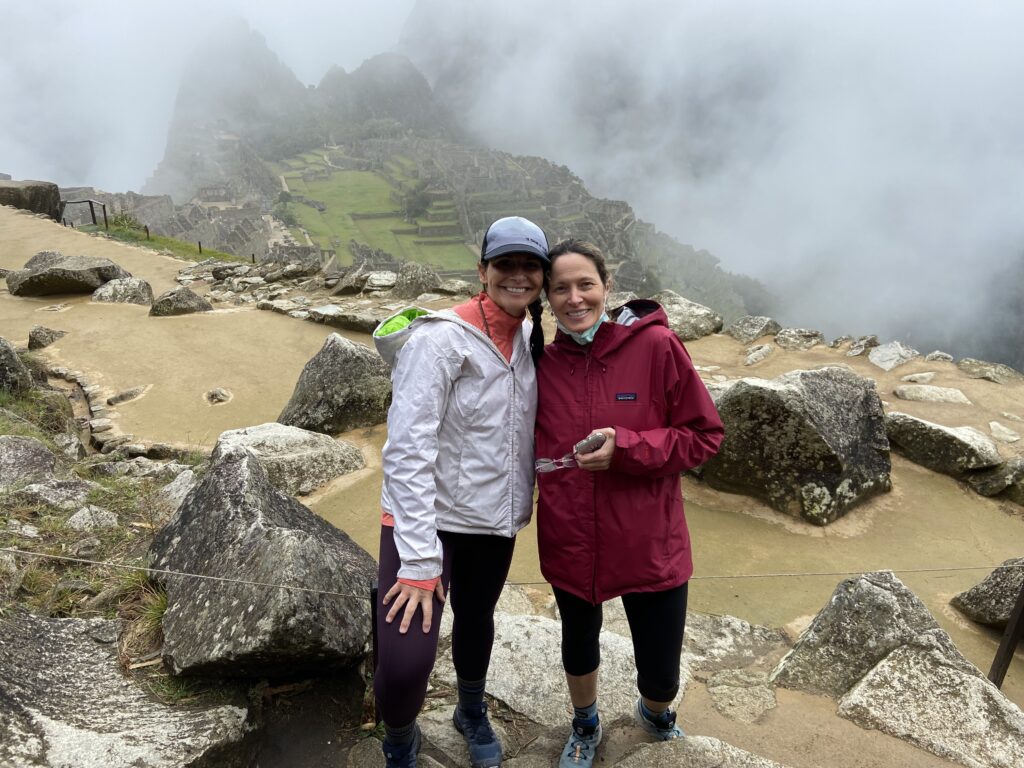 Last fall, I set out for a two-week adventure of a lifetime! I was officially in my fifties and felt there was no time like the present to push my boundaries and step outside of my comfort zone. You know, physical exertion, mental mind-bending, temperature changes, in-your-face nature, potentially suspicious food, and anything that makes you wonder later why you agreed to be that uncomfortable in every way.
Last fall, I set out for a two-week adventure of a lifetime! I was officially in my fifties and felt there was no time like the present to push my boundaries and step outside of my comfort zone. You know, physical exertion, mental mind-bending, temperature changes, in-your-face nature, potentially suspicious food, and anything that makes you wonder later why you agreed to be that uncomfortable in every way.
After months of planning, prepping, and purchasing the needed gear, I was hesitant, to say the least, because I was about to hike 26 miles to get to Machu Picchu in Peru. You see, I don’t hike. Ever. I live at sea level in a beautiful place with many easily accessible hiking spots, but I don’t hike. No excuses. I sort of like hiking. I mean, I like the idea of hiking. I don’t ever make it happen.
What do you do when you are about to push your limits? You lean on a friend, right? Surround yourself with support and inspiration, which is one of the things I love about Hybrid Fitness. In my case, one of my grade school besties, Tammy, was going with me. Tam is the epitome of a spirited go-getter. Just what I needed! After 45 years, Tam knows me inside and out and has my back. However, she hikes. Like really hikes. Like all-the-mountains-in-New-England-every-weekend hikes. She was beyond ecstatic about this adventure.
I love to travel and have been all over the world. As I get older, I am less willing to suffer for the experience. I envisioned myself trudging along, far behind my friend if I wasn’t sitting on rocks or the wet ground, gasping for breath and sobbing periodically. Later wringing the sweat out of my clothes when we finally reached our nightly campsite only to find in the morning that my muscles would be so sore I’d have to forever live on the mountain in Peru with the alpacas for company.
I am a Hybrid Fitness Coach. Coach is the keyword. I help others get the exercise they need. In the past, I wasn’t as consistent with my exercise schedule. My nutrition was inadequate, at best. I tended to overschedule myself and skip meals. Once I realized what I had signed up for with this moderate-level Sacred Valley quest, I questioned whether I was fit enough to check this off the bucket list.
I have not been backcountry tent camping since b.k. (before kids). I was worried about my back after lying on the ground all night. I imagined tripping on the rock-strewn jaunt to the makeshift bathroom in the middle of the night in the blackest of black darkness. The temperature was a concern because I could only carry so much in my pack. Freezing after sweating in the cold weather from the exertion had me thinking there could be a possibility of never being warm again. I had no concept of what the food and drink would be like, including coca leaf tea, sacred to the Incas, which has enough caffeine to ignite my heart into a full gallop giving a whole new meaning to Elvis’s Burning Love. I was purposely not pondering the chances for any up close and personal conversations with unexpected critters as we intruded into their living spaces.
Despite all of these thoughts running through my head, I did gasp for breath but took more photos than anyone else because I stopped to take in my surroundings. I was slow but steady and arrived at camp whole and happy each evening, except when the toe of my shoe caught the step and sent me tumbling down stone steps. I don’t think I’ve seen that color purple in a bruise before. Sobbing was non-existent, smiling and laughing taking its place. My gear kept me dry in the downpours and shaded my fair skin from the sun. The thin sleeping pad did save my back from complete agony. My muscles were sore but in a why-don’t-I-hike-more kind of way. The food was pleasingly on the edge of gourmet with the now welcomed coca leaf tea because I didn’t bring enough layers for the evenings and needed the warmth. On a trip to the privy one evening, I made a deal with a tarantula to stay on our respective sides of the stall. Coach Brandon would have loved that. Overall, everything went well, but that didn’t mean it was easy. It was hard. Definitely not a vacation. It was what the brochure stated, an adventure hike.
As Coach Beth of Beth Feraco Fitness says, we can do hard things. We certainly can because I have signed up to hike in Nepal for two weeks in December. No, not Everest. I am not that crazy. As you probably know by now, I hate being cold, but I will be able to see Everest from my hike. I am going with a friend from college who runs adventure tours (Far Xplorer) in Nepal. Far Xplorer supports organizations that install clean drinking water in villages. Incredibly cool all the way around.
To prepare for this adventure, I have scheduled myself more time to be consistent in my workouts and not skip meals by doing some food prep. Sure, I’ve gained a few pounds with the increase in calories but, I feel better, heartier, stronger, and more prepared this time.
Wish me luck and stay tuned.
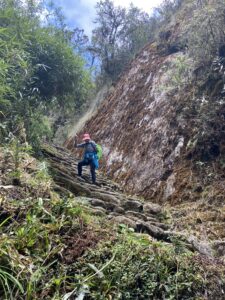
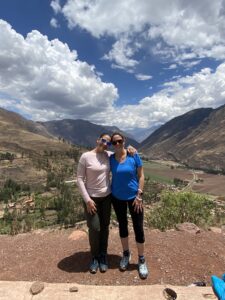



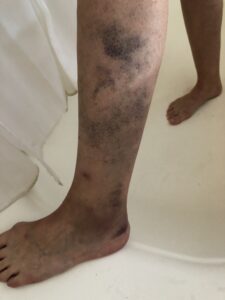



Cathy grew up in NH surrounded by a large, loving family, where she learned generosity and hard work. She now models that for her two children. She was inspired to become a fitness coach when searching for ways to become more healthy herself after a life-threatening illness.
August 2, 2021
Pelvic Floor Rehabilitation: The Nitty Gritty with Lee Ann Dinofrio, PT
Afraid to do jumping jacks at the gym?
Scared to sneeze or cough in public?
Always scouting for a restroom?
If having a weak pelvic floor is preventing you from having fun and getting the exercise your body needs, then this article is for you.
This interview with Lee Ann Dinofrio will clear up questions about pelvic floor dysfunction that you are too timid to ask.
Time to Share the Best Kept Secret in Midcoast Maine
Lee Ann Dinofrio is a physical therapist at Pen Bay Medical Center in Rockport, Maine. She specializes in pelvic floor rehabilitation.
Lee Ann is known as the best kept secret in Midcoast Maine because most people do not know that there is this kind of valuable help available for those suffering with pelvic floor dysfunction.
First, your pelvic floor is often referred to as the bowl or sling that holds the bladder, vaginal cavity, uterus (women), prostate (men), and rectum, which is the end of the large intestine that stores feces.
Lee Ann explained that pelvic floor rehabilitation is a treatment plan to strengthen the three layers of pelvic floor muscles to address issues such as, urine and fecal leakage, pelvic pain and postpartum issues.
Yes, you read that correctly. There are not one, not two, but three layers of muscle that make up your pelvic floor whether you are female or male. That anatomy is the same.
All three layers need to be strong for easy daily function to prevent embarrassing, inconvenient and possibly even painful incidents.
Disclaimer: If you feel you are in need of pelvic floor rehabilitation, please seek professional advice before following the information provided here to address your particular issues.
Visits with a Pelvic Floor Therapist
The first step to rehabilitation is evaluation. The evaluation visit is about 90 minutes and is an intimate procedure to assess the pelvic floor issue.
We say intimate because the only way to assess pelvic floor issues is vaginally or rectally.
Visits following the evaluations are about 45 minutes once per week for approximately 6 weeks. If more time is needed, then a patient’s health insurance is contacted for an extension.
Be ready for some homework
For progress to occur patients need to do their homework. Maybe you thought you were done with school, but now you are given what may be the most important homework ever to help you function easily in daily life.
Fortunately, this homework is very different than the high school algebra you speculated never using in “real” life.
This homework will help you EVERY day and involves exercises to strengthen, or even relax in some cases, the muscles of your pelvic floor.
Contracting these muscles with specific exercises for your pelvic floor are essential for addressing pelvic floor dysfunction. It works just like if you perform bicep curls to strengthen the bicep muscles of your arms only it’s muscles you cannot see.
Pulling the Drawstring
You may have already guessed that Kegels are the go-to exercise for pelvic floor strengthening and you’d be right for most cases.
Think of it as using your pelvic floor muscles to pull up and in as if lifting a drawstring bag in your abdomen.
What’s marvelous about Kegels is that you can do them anywhere at any time because nobody can tell if you are doing them. The muscles are internal. Nobody notices.
There are many variations to contracting your pelvic floor muscles.
1) Your therapist may suggest doing what is known as quick flicks, which are contracting your pelvic floor muscles quickly and letting them relax without holding them contracted.
2) Another option is to contract the muscles and hold for a few to several seconds before relaxing.
An A+ pelvic floor student
Lee Ann and other pelvic floor therapists prescribe exercises that benefit each patient depending on their specific needs.
To get on the honor roll with your therapist and benefit yourself the most, it’s imperative that you perform your therapist’s prescribed exercises correctly and consistently.
For Lee Ann’s recommendations for exercises fill out the form below!
No Squatting Allowed?
Some exercises may have to be put on the back burner for a while. Your therapist may suggest being careful with squatting because your pelvic floor muscles relax when performing a squat.
You may be thinking, “How am I going to build my quads and lift anything if I’m not supposed to squat?”.
Well, to be more precise, if you can contract your pelvic floor by performing a Kegel while simultaneously squatting, then you may be good to go.
Until then, working on strengthening the pelvic floor muscles needs to happen before squatting in the gym. In lieu of squats, consider wall sits and glute bridges.
Check out how to do proper glute bridges in our free guide (just fill out the form at THIS LINK to gain Instant Access)
Why do you have a weak pelvic floor?
You can experience a weak pelvic floor for a multitude of reasons.
Is it in your genes?
There isn’t significant research to support that having a weak pelvic floor is genetic. However, Lee Ann has seen in the history of her patients that there does seem to be a connection, such as a daughter, sister, mother, aunt, grandmother, etc. who all have suffered in some way from weak pelvic floor muscles.
Have you housed a human?
Pregnancy certainly can take its toll on pelvic floor muscles while carrying a child and whatever happens during the birth, either vaginally or cesarian section.
Muscles that are torn, cut or damaged in some way can mean that those muscles are not as strong as they were prior to pregnancy.
Retired muscles?
Our age may be another factor contributing to a weak pelvic floor. As we age our muscles get weaker due to wear and tear and overwork.
How is your fitness level?
Similar to all other muscles in our bodies, muscles that we do not use and do not continue to strengthen get weak and cannot perform their responsibilities appropriately.
Sufficient exercise each day is important for the muscles of your pelvic floor and your overall health.
What can I do to prevent weak pelvic floor muscles?
Exercise can make a significant difference in how well your pelvic floor muscles perform. The phrase “use it or lose it” comes to mind. If you do not exercise the muscles in your body, including your pelvic floor muscles, then the strength of those muscles can decline over time.
An option for preventing severe issues as a result of a weak pelvic floor is to seek out a therapist before the situation interrupts your daily living activities. Maintenance and consistency are key to keeping the pelvic floor strong.
I want results today!
Once patients take the leap and initiate a visit with Lee Ann, they tend to want results on the first visit. However, pelvic floor issues take time and dedication to remedy.
That said, most patients feel better emotionally and mentally after the first visit because they now know what the issue is and that there are steps to follow to strengthen their pelvic floor.
Many patients haven’t confided in anyone about how they are suffering in their daily lives with their weak pelvic floor. Once in Lee Ann’s office, the flood gates open through sharing their experiences and asking a plethora of questions.
Do not be nervous to ask any question of your therapist. It’s best to throw it all on the table, so to speak.
Yes, but I’m a man…
We associate weak pelvic floor conditions with women, but, as mentioned above, all the pelvic floor muscles are the same for both women and men.
For the most part, men seek Lee Ann’s help for incontinence and issues that may be related to their prostate.
Again, Lee Ann and other pelvic floor therapists have heard it all. They can provide the answers you seek or refer you to a specialist in another area that can help.
It Depends
Clothing and other products to help with weak pelvic floor issues are not necessarily helpful. Let me explain.
Lee Ann revealed that even though there are items that work very well and provide an element of confidence for going out in public, they may not instill the urgency necessary to remedy the underlying concern of weak pelvic floors in a timely manner.
Some folks tend to rely on these products, such as incontinence pads and underwear, and this can decrease the incentive to do their homework to improve the primary problem.
Understandably, you need to function in public life with confidence. It depends on how much you rely on using these products.
Going under the knife
There are scenarios when Lee Ann recommends a consultation with a surgeon.
However, before seeking out a surgeon to address your weak pelvic floor, please see a pelvic floor therapist. Take their advice to heart and give their recommendations your best effort.
In Summary
If you have any issues related to your pelvic floor that affect your daily living…
1) Please see Lee Ann Dinofrio at Pen Bay Medical Center or a therapist near you that specializes in pelvic floor rehabilitation. It can change your life for the better!
2) Do your pelvic floor homework EVERY day
3) Eat a balanced diet with fiber, exercise, attain adequate sleep and enjoy life
There is hope and help to address pelvic floor dysfunctions. You do not have to constantly worry about embarrassing situations, finding a restroom in public or jumping jacks at the gym.
Lee Ann Dinofrio currently practices at Pen Bay Medical Center in Rockport, Maine and has over 36 years of experience as a physical therapist. She received her training to specialize in pelvic floor therapy at the Herman & Wallace Pelvic Rehabilitation Institute and has been practicing pelvic floor rehabilitation since 2014.
She addresses urinary and bowel issues, pelvic pain and postpartum pelvic issues. Lee Ann helps women AND men and includes any necessary orthopedic steps in her treatment plans, as well.
Lee Ann is also certified in Integrative Dry Needling and finds this to be a very useful tool in the treatment of pelvic floor dysfunctions. (please note, no “private parts” are needled!).
To see Lee Ann, all patients need to be referred by their primary care physician, certified nurse practitioner or certified midwife.

Cathy grew up in NH surrounded by a large, loving family, where she learned generosity and hard work. She now models that for her two children. She was inspired to become a fitness coach when searching for ways to become more healthy herself after a life-threatening illness.
April 30, 2021
Best Exercises To Fix Neck Pain
What a Pain in the Neck!
If it’s not your boss with a last minute request on a Friday afternoon, or your in-laws showing up unexpectedly for the weekend, or even your dog shredding your couch cushions while you’re out on a hot date, then maybe the pain in the neck in your life is just that…pain in the neck.
If your neck is annoyingly sore, especially by the end of each day, let’s dive into why that is, and what you can do about it. This article shares a few simple tips, tricks, and the best exercises to fix neck pain.
Before following any of the suggestions in this article, please consult your physician if your neck pain:
- Is getting significantly worse.
- Exists for more than 6 weeks.
- Comes on sharp and quickly.
- Is accompanied by nausea.
Do You Really Have Rocks in Your Head?
One reason why your neck aches is that it may feel like your head is filled with rocks. Not necessarily true in most cases, but your head is HEAVY!
Weighing in between a whopping 10-12 pounds, your head not only affects your neck, but it also has a significant impact on the rest of your spine. Envision trying to balance a bowling ball at the top of your spine!
Seven small vertebrae in your neck, as well as, muscles, ligaments and tendons all working together support everything you do with your head. It’s a big job and something that most of us take for granted. So, making sure you maintain good posture is key to putting less torque on the neck.
The Impact!
The position of your head impacts the pressure on your spine, meaning that for each inch your head moves forward, an additional 10 pounds of weight is felt on your spine.
So, for example, looking down at your phone (45 degrees) elevates the pressure on your spine from about 11 pounds (neutral) to 48 pounds. That’s huge!
If your neck and back are painful, what is happening at the top of your spine may be a contributor.
Let’s talk about perfect posture:
- Hold your phone up in front of your face instead of looking down
- Make sure you are looking straight at your computer monitor with your head neutral over your shoulders
- Ears over the shoulders by pulling chin in slightly and lengthening the back of the neck
- Shoulder blades pulled together and down slightly
- Chin parallel to the floor
Stretching Your Sore Neck Muscles
There are a variety of stretching exercises that you can do to alleviate and avoid neck pain. Here are some of my favorite:
Chin Tuck:
- Standing or sitting tall
- Chin parallel to the floor
- Pull chin in with ears over shoulders
- Hold 1-3 seconds
- Repeat for 10-15 repetitions
Wall Slides:
- Standing against a wall
- Pull chin in and lengthen the back of the neck
- Place arms laterally against the wall bending at the elbow for 90 degree angles
- Keeping your back against the wall by engaging your abs
- Extend arms directly over head by sliding arms up the wall to feel a stretch in your chest
- Return your arms to the starting point
- Repeat for 10-15 repetitions
Shoulder Blade Squeeze:
- Standing or sitting tall
- Ears aligned over your shoulders
- Squeeze shoulder blades together keeping shoulders down
- Hold for 1-3 seconds
- Repeat for 10-15 repetitions
Look Both Ways:
- Standing or sitting tall
- Ears aligned over your shoulders
- Slowly look directly left over your shoulder
- Return to center
- Slowly look directly right over your other shoulder
- Repeat for 5-10 repetitions each side
Beware of Traps!
Is your neck sore because you are holding a lot of tension in your trapezius muscle?
It’s the large triangle shaped muscle that runs from the base of your skull (occipital bone), down the center of your back (thoracic vertebrae), and laterally to your shoulders (scapula).
Simple Suggestions to follow to avoid being tripped by your traps are:
Shoulder shrugs:
- Hold arms down by your sides
- Lift shoulders up and back in a circular motion
- Repeat for about 10-15 repetitions
Trap stretch:
- Interlock fingers behind you and pull your fist to the left side of your waist
- Hold your left elbow out laterally away from your body
- Slowly lean your left ear to your left shoulder toward your elbow.
- Hold for 30 seconds
- Repeat on your right side
If interlocking fingers behind you is a challenge:
- Simply lean your left ear toward your shoulder
- Loop your left hand over your head
- Apply light pressure to the right side of your head, increasing the intensity of the stretch slightly
- Hold for 30 seconds
- Repeat on your right side
The above exercises not only help to increase neck strength and flexibility, but help improve posture, too!
Postural Kyphosis, Say What?
Postural kyphosis is curvature of the spine that forms a hump on the upper back. The hump can be located at the base of the neck, or slightly lower between the shoulder blades. Because of this, the hump is referred to as buffalo hump, round back, hunch back, as well as the outdated and offensive term dowager’s hump.
Accordingly, contributors to the formation of a back hump are:
- Carrying extra weight – extra pounds are a challenge for the skeletal structure of your whole body. However, fat also accumulates on the spine as protection and increases the presence of a hump
- Poor Posture – allowing your body to slouch can create physical misalignment
- Lack of Fitness – keeping your muscles strong and your limbs mobile allows your body to hold it’s frame properly
- Injury or vertebral compression fractures in which part of a vertebrae collapses
- Degeneration of the spine, a.k.a osteoarthritis, in which function and ability are impaired
How You Can Prevent or Correct Your Hump
You can prevent the formation of a back hump or decrease the hump you have by making some changes that involve more than just exercises for your neck and back, such as:
Sitting and standing tall, as well as sleeping with appropriate support – Your posture determines how your tissues support your bones in proper alignment – see the Hybrid Fitness posture article HERE
Stretching the pectoral muscles of your chest to allow the front of your torso to open, and your shoulders to move back and align with your hips. To do this:
-
- Stand in an average doorway
- Place arms at 90-degree angles on either side of the door frame
- Step one foot forward and lean forward with your sternum while relaxing the muscles of your chest
- Keep your head aligned with the spine, with ears over shoulders
- Increase the stretch by leaning forward a little at a time as you inhale and exhale
- If the doorway is too wide, do one side at a time
- If this stretch is easy, raise arms higher against the door frame
- Hold for 30 seconds
Stretching the muscles of your upper back to pull the shoulder blades together broadening the chest. To do this:
-
- Face a wall standing a few feet away with feet at least shoulder width apart
- Place both hands flat against the wall above head height
- Keep your neck and head aligned with your spine
- Slowly push your butt back as you lean into the wall
- Inhale and with each exhale sink a little deeper into the stretch
- Hold 30 seconds
Building strength in your back, shoulders and arms by doing a variation of a push-up.
*Note – before you discount this exercise thinking it’s too hard and no fun, see the Hybrid Fitness article on how to get your first push-up and variations of push-ups HERE.
The Miracle of Massage
Another option is to receive a massage from a licensed therapist in order to help target muscle “knots” specifically. It’s beneficial to relax as much as possible while the therapist is massaging the muscle. Slow inhales and exhales can help here.
In a pinch, an alternative to a massage:
- Place a tennis ball in a long sock and hang the ball over your shoulder
- Stand with your back to the wall with the ball between your body and the wall
- Locate the ball just below your neck to left side of your spine
- Bend your knees to roll your back over the ball in a vertical line between your shoulder blades on the left side of your spine.
- Then, move the ball to the right side of your spine and roll vertically again.
- Concentrate longer on areas where you have muscle soreness or pain until the muscle relaxes.
Be sure to hydrate with water after any massage in order to help your body flush toxins that have been released into your bloodstream. As if you needed another benefit to drinking more water!
The Next Step!
There you have it! The best exercises to fix neck pain.
These exercises will help you stretch parts that are sore, and build strength in your neck and back muscles to prevent the pain from returning.
You don’t need to large chunks our of your day to do these. Implement them slowly, and one at a time. Build a habit of doing them, and I promise, you’ll see relief!
I would even recommend adding them into your routine even if you don’t experience any pain currently. This will help prevent any soreness or pain from even starting!
If you found this article helpful, please check out the other articles from Hybrid Fitness coaches HERE
Hybrid Fitness YouTube Channel

Cathy grew up in NH surrounded by a large, loving family, where she learned generosity and hard work. She now models that for her two children. She was inspired to become a fitness coach when searching for ways to become more healthy herself after a life-threatening illness.
April 2, 2021
Ideas for Relaxation to Use Anywhere
Incorporating ideas for relaxation in your busy life is simple.
How many times have you heard someone say that they just want to chill out and relax? Why do we crave relaxation? Because, when we are relaxed we feel calm, well, mentally settled, and comfortable. Keep reading to find out how you can be relaxed in your daily life.
The Benefits of Relaxation
The benefits of relaxation go above and beyond just being comfortable. Moments of relaxation in our fast-paced world actually make us healthier humans.
Just to name a few, relaxation has physical and mental benefits for your whole being by:
- Lowering blood pressure & heart rate
- Decreasing anxiety
- Aiding digestion
- Brightening your mood
- Reducing aches and pains
- Improving concentration
- Enhancing sleep
- Reducing negative feelings (anger, frustration)
Let’s move on to find out how to apply ideas for relaxation to your life to get these benefits.
Exercise!
As a matter of fact, you do not have to become an athlete to reap the relaxation benefits of exercise. To begin with, simply moving your body in some way every day will get you in the groove of relaxation. Exercise can be low- or high-impact depending on what creates that feeling of relaxation for you.
Examples of aerobic and anaerobic exercise to reach a state of relaxation are:
- Walking – Preferably outside, but even around your house or up and down stairs works
- Biking – Preferably outside, but a stationary bike gets the job done, too
- Dancing – In your living room, while washing dishes, anywhere, just shake it!
- Yoga – All you need is a mat and an app with follow along guidance
- Tai chi – Google ‘tai chi for beginners’ and choose a video to follow
- Qigong – Google to find a video that calls to you
- Pilates – Start with a mat class or join a Pilates studio to use equipment
- Stretching – Check out theflexibilityguru.com, Hilery Hutchinson and her 10-minute stretching book
If attending a class in person is not your thing right now, have no fear. The web is exploding with fitness classes to fit anyone’s preference.
You can choose a previously recorded program to practice whenever you choose, or a live practice where you interact with instructors and participants in real time. Furthermore, being part of a community online or in person will encourage you to stay consistent in keeping this idea of relaxation in your daily life.
Tense and Release
Another technique to activate your muscles is progressive muscle relaxation. It’s a practice involving tensing muscle groups, and then releasing the tension by relaxing the muscles.
Here is how you can use the tense and release technique:
- Start from your toes, move to your calves, then your thighs, working your way up to your head. Don’t forget your face!
- By focusing on each muscle group individually, it is easier for you to target areas that may be more tense or sore than others.
- Tense for 5 seconds
- Relax for 30 seconds
- Repeat
While this idea for relaxation is easy, in order for any relaxation technique to work fully you must be MINDFUL.
What does being mindful have to do with relaxation?
Being mindful is a mental state of being consciously aware of what is happening in the present moment.
Mindfulness is created by focusing on, calmly acknowledging and accepting:
- How you are feeling
- What you are thinking
- Physical sensations of your body
Focusing on your breath is one way to create mindfulness, because you are paying attention to what is happening to your body as you breathe. This focus makes it easier to notice if you have shallow breathing, if you are holding your breath, or if your breathing is faster than normal.
Breathe!
Yes, breathe to relax your body. It’s that simple. Believe it or not, a lot of us do not breathe fully, especially when stress is present. If we are not mindful of our breathing we tend to hold our breath or take shallow breaths.
Options to release stress, relax muscles and cleanse your body with essential oxygen are:
- Focusing on taking slow, deep breaths for a few minutes, a few times per day. Be it in the car, washing dishes, folding laundry, raking leaves, etc.
- Using a square breathing technique where you inhale to the count of 4 (or whatever # works for you), hold for a count of 4, exhale to the count of 4, hold for a count of 4, and repeat for a few minutes.
- Breathing from your diaphragm by placing your hand on your abdomen and taking slow, deep inhales focusing on your abdomen expanding followed by a longer exhale. This stimulates your parasympathetic nervous system to calm your body and reduce your heart rate and blood pressure.
- Meditating while focusing only on your breath by being mindful of the oxygen entering your body and the carbon dioxide leaving your body. Closing your eyes can help keep the focus on your breath.
Transferring this mindful practice to other things in your life by focusing on one thing at a time will make it easier to be present in the moment instead of allowing your mind to be scattered.
Need a visual to be mindfully present?
Use your imagination. Yes, the game of pretend from when you were young.
Envision calm and serene images. Many people find it helpful to include nature in their visualizations.
Ideas to consider are:
- Sitting in a comfortable lounge chair on the beach with the sun shining and the temperature is perfect. Watch a wave swelling toward the shore as you inhale expanding your abdomen and every time you exhale imagine the wave breaking slowly across the shore.
- Gently swinging in a hammock on a fall day with the leaves floating down around you. With each sway of the hammock your body is sinking deeper into relaxation as you inhale and exhale.
- Hiking on a trail in the woods meandering between the trees, hearing the birds chirping, the squirrels chattering and the sun’s rays peeking through the leaves and branches.
- Choosing your favorite place surrounded by all the things that make you feel calm, happy, and whole. Wherever that may be, how do you feel when you are in your favorite place?
You can have a lot of fun with these ideas for relaxation because you can let your imagination run wild and transport yourself anywhere.
Relaxation made easy
There’s an app for that! Consider choosing from the plethora of apps for download, free and otherwise, that provide ideas for relaxation. They offer everything from listening to music or nature sounds to hearing a voice guiding you by story or through visualization and much more.
A few internet favorites are:
- Calm
- 10% Happier
- Insight Timer
- Headspace
It is easy to see that these apps take the thinking out of the practice allowing you to just follow along.
To Recap
Practicing these ideas for relaxation will:
- Keep your mental state balanced
- Keep you physically fit
- Improve your inclination to see the bright side
- Manage your fight-or-flight response in stressful situations
In short, the trick is to choose a relaxation technique that works for you, and not one that will add to your stress by trying to accomplish it in your busy day. Consequently, you may have to try a few to find the one that works easily.
If you enjoyed this article please check out other helpful articles by our coaches here:
Hybrid Fitness You Tube Channel
Remember…small steps, big results.

Cathy grew up in NH surrounded by a large, loving family, where she learned generosity and hard work. She now models that for her two children. She was inspired to become a fitness coach when searching for ways to become more healthy herself after a life-threatening illness.

